
Jojakko-ji Temple is located on the side of Mt. Ogura (Ogurayama) in Sagano, Kyoto and is one of the best temples for viewing autumn foliage. It is said that the name Jojakko – meaning “everlasting light of wisdom when nearing nirvana” in Japanese - comes from the light that shining through the trees that overgrow the temple. There you can witness beautiful scenery throughout all seasons.
Autumn Scenery with Slightly Crimson Colored Light Coming Through Jojakko-ji Temple's Foliage
Once could say that the beauty of Jojakko-ji comes from the numerous trees in the area. There are over 200 Japanese maple trees covering the temple grounds. The layered branches and leaves create a beautiful gradation of red, yellow, orange, and green, as well as an elaborate pattern of shadows on the stone pavement.
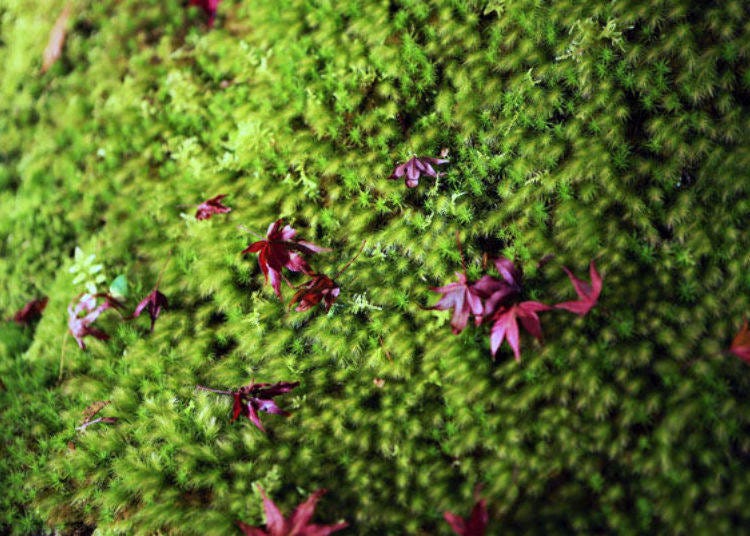
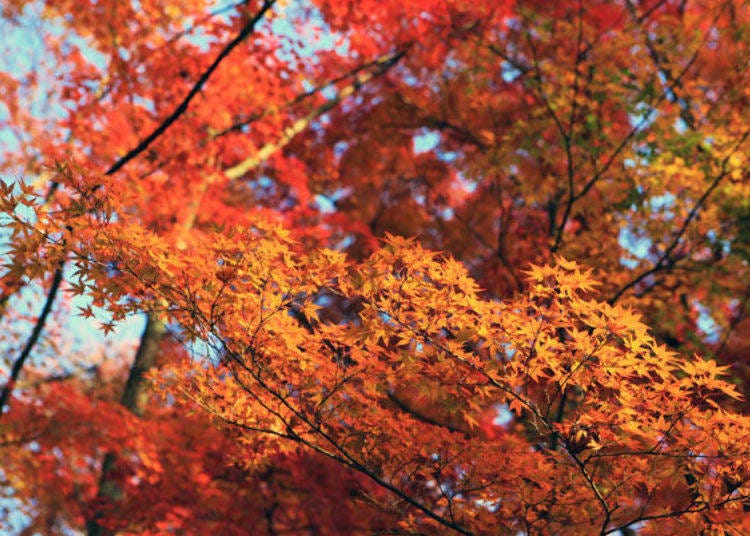
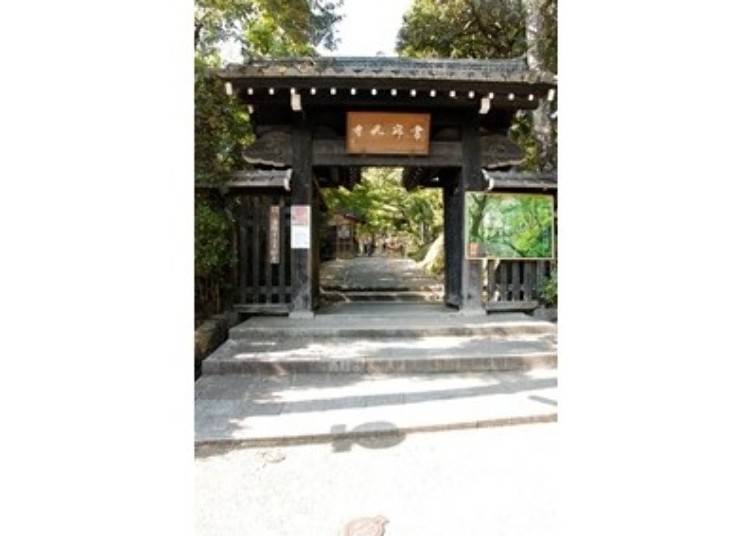
You will first go through the main gate, which was reportedly built during the middle of the Edo period, to enter the temple grounds. The gate has a large sign with “Jojakko-ji” written on it.
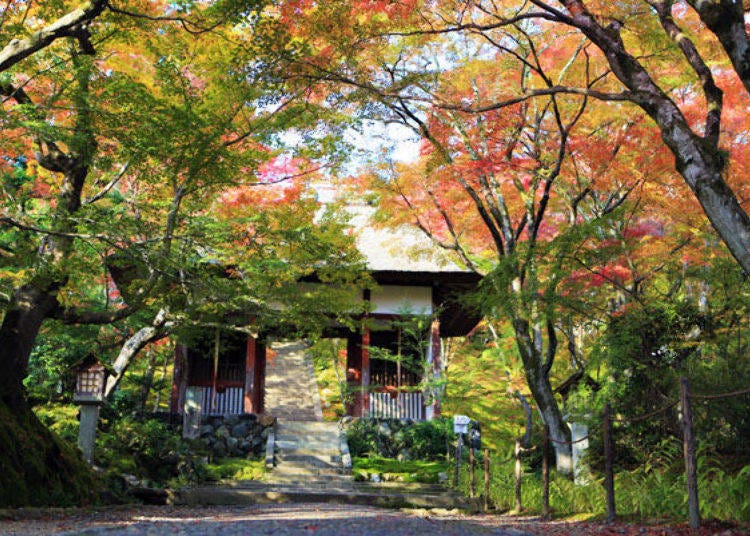
After walking along a small path with beautifully hued trees, you will come to the Niomon Gate, which symbolizes Jojakko-ji, and is used in many forms of media.
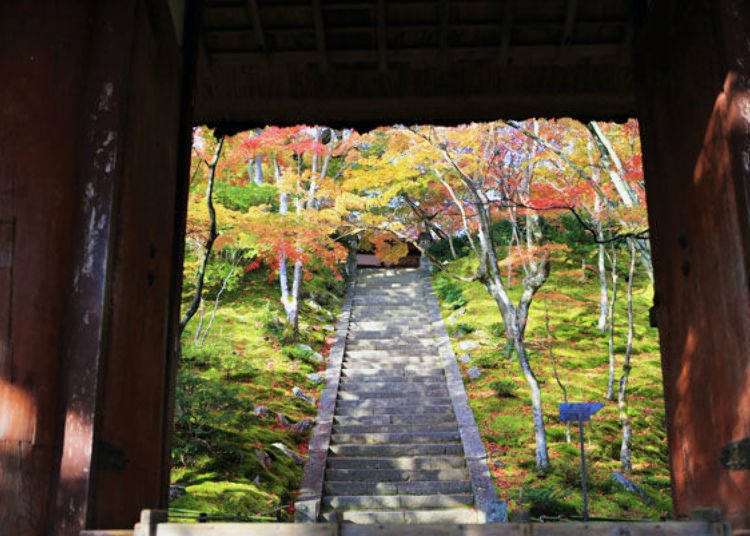
Looking through Niomon Gate, the view of the stairs leading up through the colored scenery is like a painting.
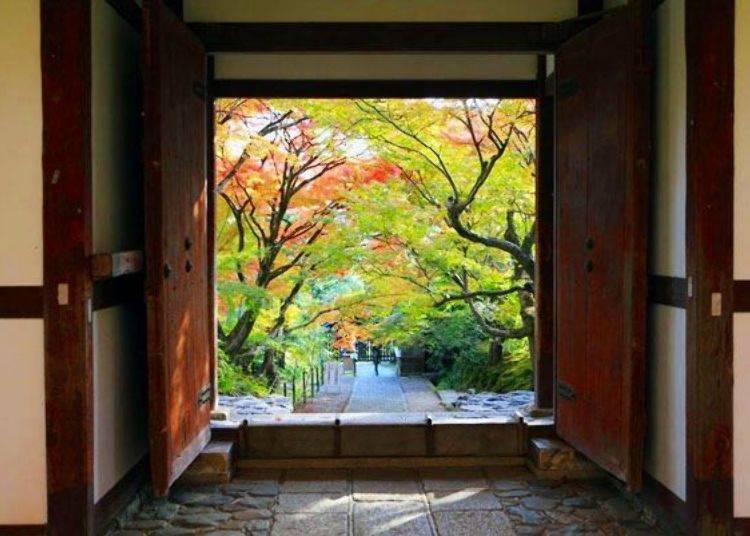
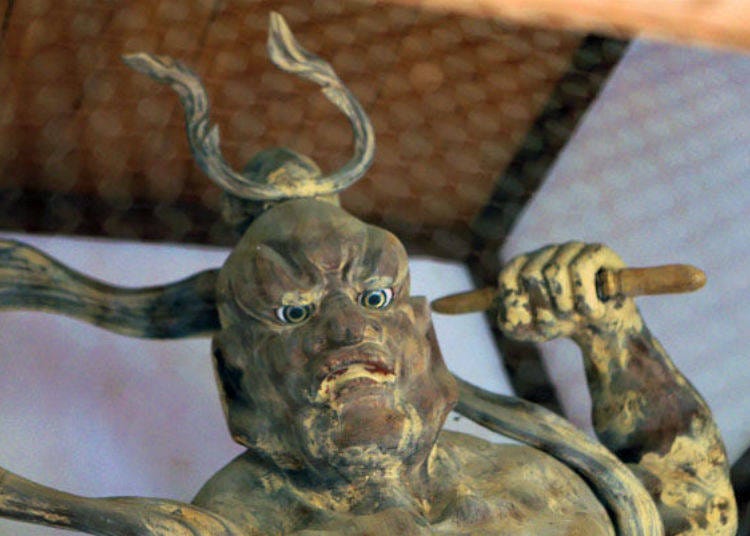
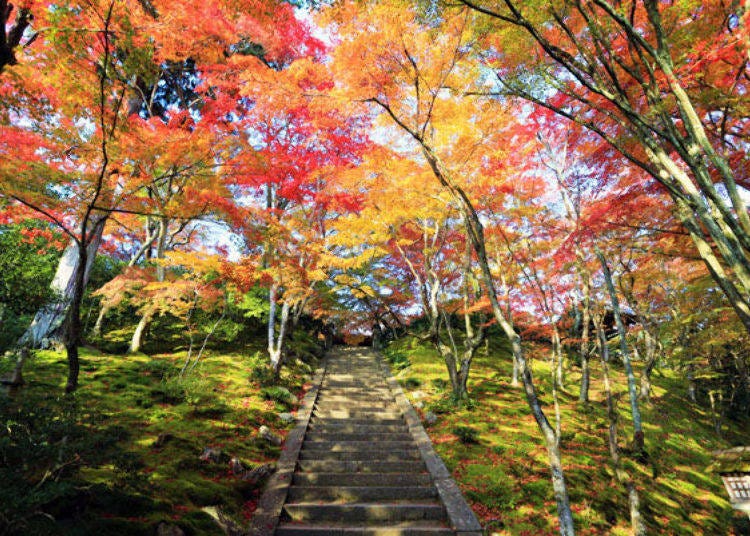
The stone stairs behind Niomon Gate are surrounded by colorful trees that reflect the sunlight beautifully. The ground on either side are carpeted with green moss. Walking up the stairs is like walking in a kaleidoscope - the scenery changes with every step.
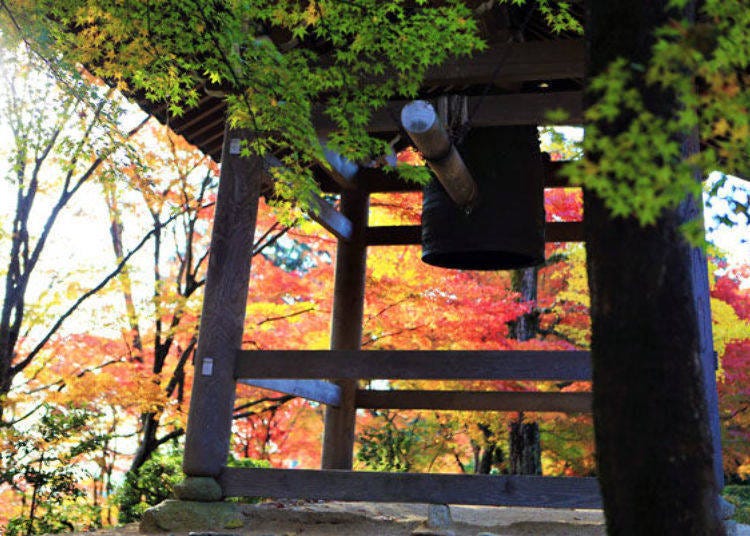
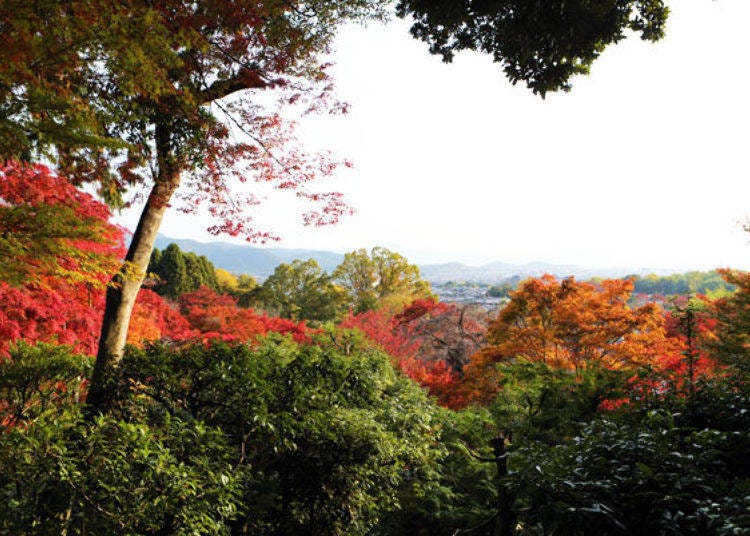
Following the worship route from the main hall, a view of Kyoto City and colored leaves is visible on the left hand side. It’s a perfect place to catch your breath before continuing up the route leading to Tahoto Pagoda (two-storied pagoda), an important cultural property built in the Momoyama period.
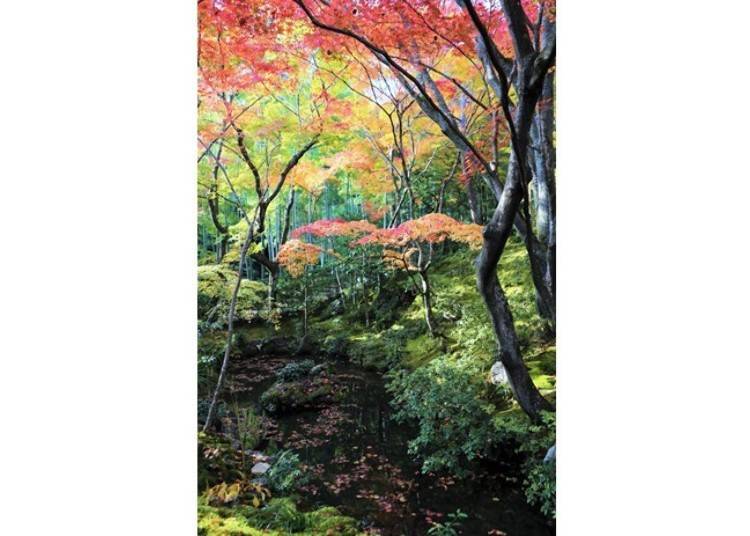
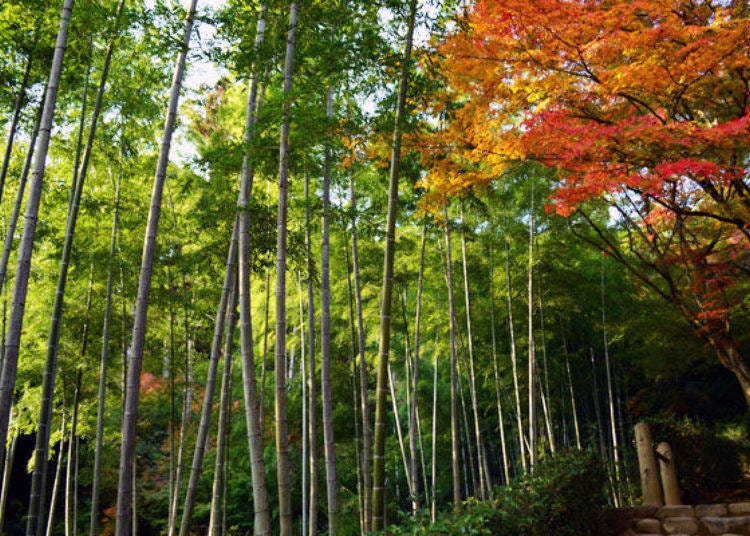
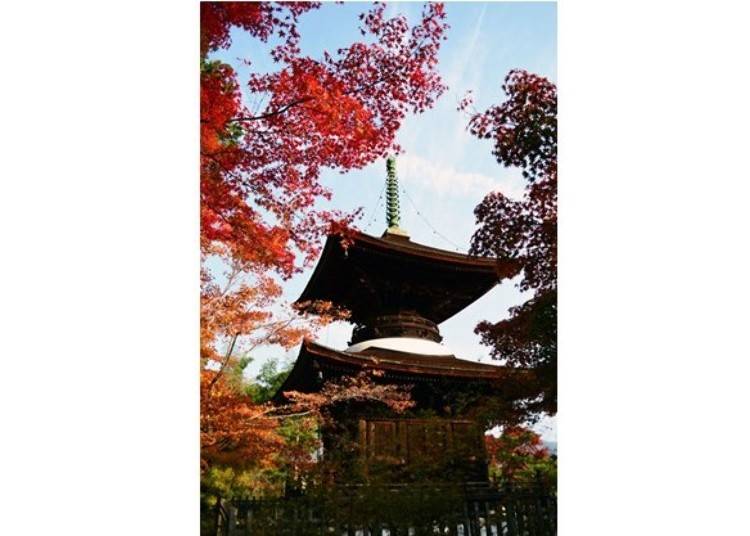
Tahoto Pagoda is said to have been built by local leaders of Kyoto. It is 12m tall, housing statues of Shaka and Tahonyorai and referred to as Heisonkaku. The interior is off limits and can’t be seen, but the exterior and its ornate engravings are worth the visit.
Jojakko-ji, Filled with Beauty throughout the Seasons
Autumn may be the most colorful season, however Jojakko-ji is filled with beauty throughout the year such as cherry blossoms in spring, moss during the rainy season, vibrant greenery in early summer and the snowscape in winter.

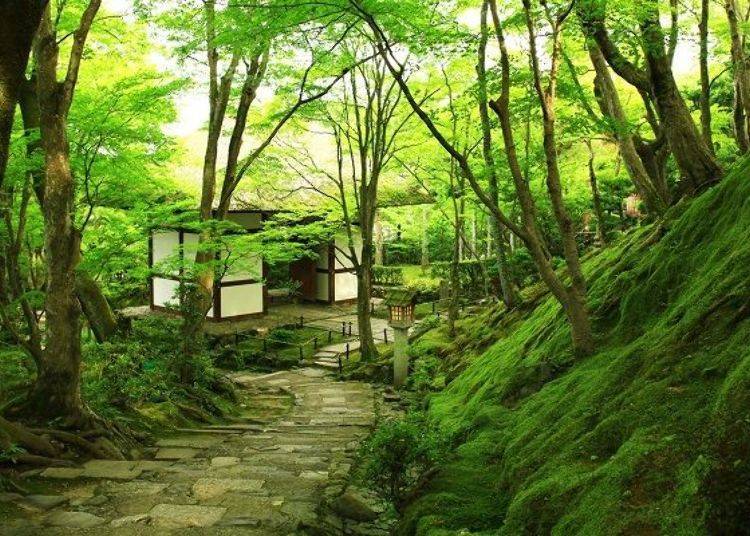
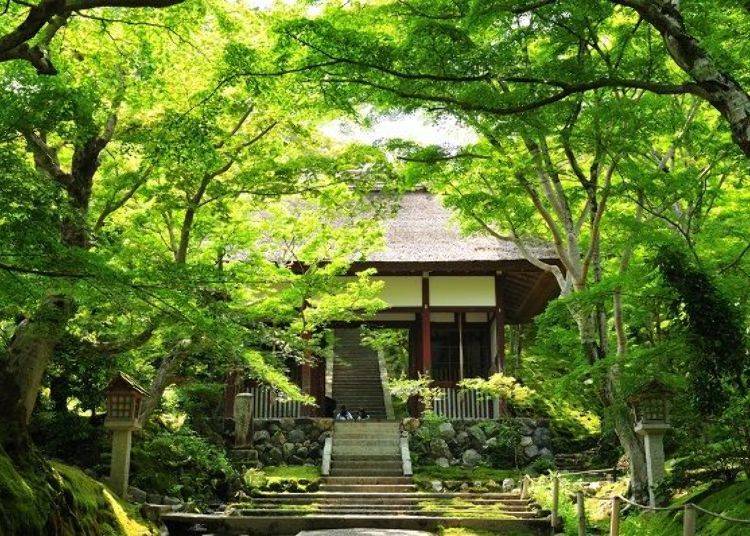
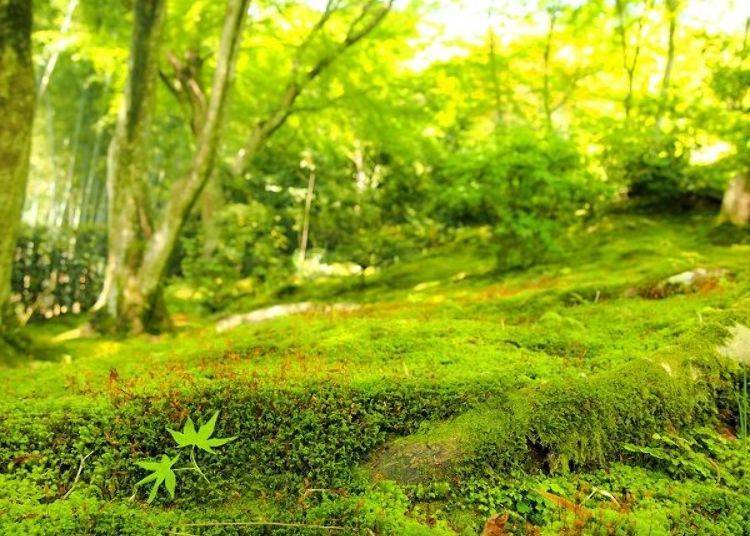


We hope you’ve enjoyed this guide to Jojakko-ji Temple, and its colorful gradation of foliage and dramatic scenery throughout the year. If you are in the Sagano and Arashiyama region during your travels, please stop by this beautiful temple.
-

-
Address
3, Sagaogurayamaoguracho, Ukyo-ku, Kyoto-shi, Kyoto, 616-8397
View Map -
Nearest Station
Sagaarashiyama Station (JR Sagano Line / JR San-in Line)
15 minutes on foot
- Phone Number 075-861-0435
-
Address
3, Sagaogurayamaoguracho, Ukyo-ku, Kyoto-shi, Kyoto, 616-8397
Text by:Myogaya Nobuhisa
Book an unforgettable experience in Kyoto!
Make your trip extra memorable by booking one of these recommended tours on our partner site,Rakuten Travel Experiences!
- Area
- Category
*Prices and options mentioned are subject to change.
*Unless stated otherwise, all prices include tax.
Popular Tours & Activitiess
Recommended places for you
-

Jukuseiniku-to Namamottsuarera Nikubaru Italian Nikutaria Sannomiya
Izakaya
Kobe, Sannomiya, Kitano
-

To-ji Temple
Temples
Kyoto Station, To-ji Temple
-
Goods

Yoshida Gennojo-Roho Kyoto Buddhist Altars
Gift Shops
Nijo Castle, Kyoto Imperial Palace
-

ISHIDAYA Hanare
Yakiniku
Kobe, Sannomiya, Kitano
-

Kambei Sannomiyahonten
Yakiniku
Kobe, Sannomiya, Kitano
-

Kanzenkoshitsuyakinikutabehodai Gyugyu Paradise Sannomiya
Yakiniku
Kobe, Sannomiya, Kitano
-

Kyoto's Hidden Treasures Open This Winter! Enjoy Exclusive Access to 15 Rare Cultural Sites (Jan-Mar 2026)
by: Guest Contributor
-
Ad

Experiencing Manga as Culture, Not Just Reading It: Expo 2025 with Rumiko Takahashi
-

Celebrate a Dreamy Barbapapa Christmas at JR Osaka Station's Twilight
by: Guest Contributor
-

November Events in Kansai: Fun Festivals, Food, and Things to Do in Kyoto & Osaka
-

New Way to Reach Koyasan! Ride Nankai's 'GRAN Tenku' for a Heavenly Journey
by: Guest Contributor
-
Ad

Café Bahnhof in Osaka: The home-roasted coffee that captivated G20 leaders!
Inspiration for Accommodations
-

Spacious Family Hotel in Namba: 20 Comfortable Stays for Family Fun
-

Charming Hotels to Enjoy the Spectacular Views of Arashiyama's Autumn Leaves from Your Room
-

Experience Stunning Views of Osaka Castle from Private Spaces: Top Hotels Near Osaka Castle
-

Recommended by Visitors! Arashiyama's Best-Rated Hotels
-

Family-Friendly Universal Studios Japan Hotel with Excellent Access
-

Enjoy a Comfortable Stay in Osaka! 10 Hotels with Convenient Airport Shuttle Services
-

Top 10 Recommended Hotels Near Namba Station with Great Access
-

Enjoy Night Views from Your Room! Recommended Hotels in Namba Area
-

Autumn in Japan 2025: Fall Foliage Forecast & Where to Enjoy the Colorful Leaves (+Tour Info)
-

Michelin Star Restaurants & More: 3 Best Okonomiyaki Shops in Dotonbori Osaka
-

Beyond Stunning! Kyoto’s Most Gorgeous Temples Explored!
by: Steve Csorgo
-

Exploring the Timeless Beauty and Spiritual Significance of Nara's Popular Temples
-

5 Popular Things to do in Umeda - Osaka's Central Area!
by: WESTPLAN
-

Inside Kyoto's Spectacular Sanjusangen-do Temple with 1,000 Gold Statues
- #best gourmet Osaka
- #things to do Osaka
- #what to do in kyoto
- #what to bring to japan
- #best gourmet Kyoto
- #new years in Osaka
- #what to buy in nanba
- #Visiting Osaka
- #onsen tattoo friendly arima
- #daiso
- #Visiting Kyoto
- #best japanese soft drinks
- #japanese fashion culture
- #japanese convenience store snacks
- #japanese nail trends













